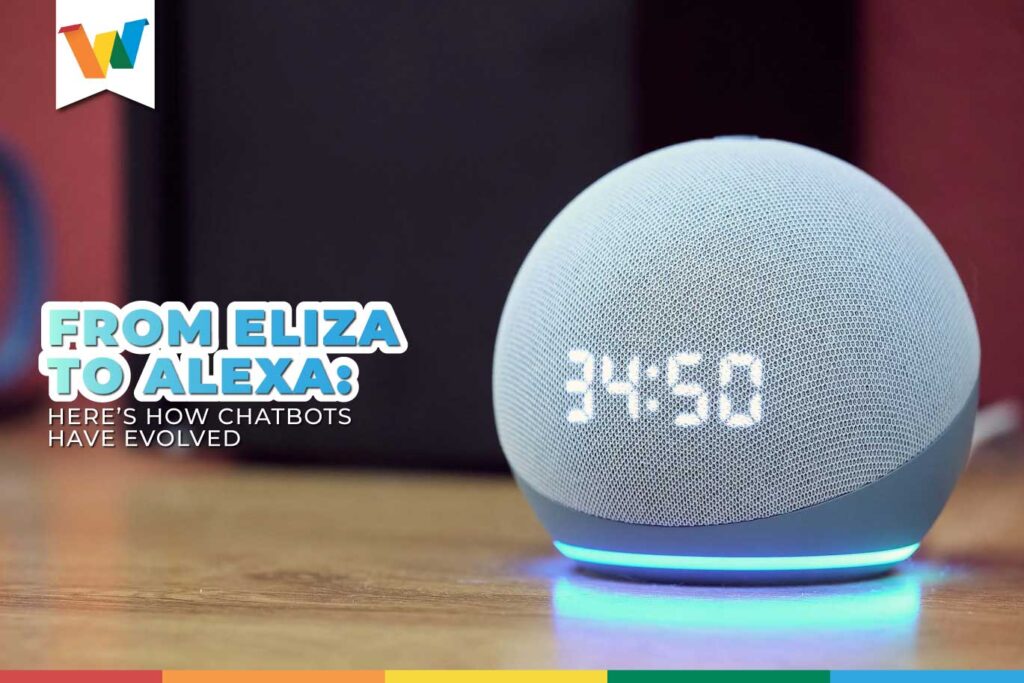The possibility of a computer having a conversation with a human being seems like a movie, although it is something that happens frequently nowadays, thanks to the virtual assistants that are integrated into websites, apps and home devices.
But did you know that this idea started in 1960? Yes, chatbots, those software that allow computers to answer questions from humans, have been around for more than 50 years and are advancing more and more every day.
We are going to tell you about Eliza, the first chatbot in history and how she will become the grandmother of Alexa, one of the most famous virtual assistants in the world.
Eliza, your virtual therapist
Machines were not intended to behave like humans. But that didn’t stop Joseph Weizenbaum, a computer expert at the Massachusetts Institute of Technology, who in 1966 developed the first chatbot, Eliza, a software aimed at interacting and asking questions in conversation.
Eliza was in charge of functioning as a psychotherapist would, but although it was a great technological advance, it had its flaws. She had trouble understanding tones or intentions in a conversation and was rarely able to ask different questions. This is how the story began, with a chatbot that only knew how to ask “Why are you saying that? And how does that make you feel?”
Like Eliza, there were other chatbots that relied on doctors or therapists for their interactions with humans. The PARRY software, created in 1972, was based on a patient and was even able to interact in a conversation with Eliza. The conversation resembled a psychological consultation and although it was simple, it was actually a much more complex step for humanity.
Gradually in history chatbots changed from therapists to something more accessible to everyone. For example, it was in 1995 when ALICE was created, a chatbot based on open source code that allowed developers to create their own chatbots. And it would be a few more years until 2001 when we would meet SmartChild, a chatbot for conversational platforms to interact in a fun way with users. The most important thing? It would be the precursor of Siri.
Hey Siri, can you tell me a joke?
Siri is the virtual assistant of the iOS system, capable of answering users’ questions when querying the web. And it can even obey certain commands such as calling a contact, opening applications and managing small tasks.
In addition, Siri evolved from its beginnings to have a voice to make the experience more human. It can even tell you a joke if you ask it to! Whether the joke is good is another matter.
Alexa, play “Despacito”
Amazon’s star Alexa would make its first appearance in 2014, being a software that works through voice recognition to interact with users. You can ask her questions, ask her to play music, remind you of tasks or tell you a joke (yes, Alexa, like Siri, also has a sense of humor!). In addition, Alexa integrates with many smart home devices, allowing you to control lights, heating and any other device connected to it within the same place.
Alexa has given rather curious answers to unexpected questions. For example, someone once asked Alexa if she was a robot, to which Alexa replied, “No, I’m not a robot. I’m an artificial intelligence in a silicon cloud.” Another time, someone asked her if she could cook a pizza on a wood stove, to which Alexa replied, “I’m not sure – why don’t you try a grill instead?” No doubt, Alexa is a very smart virtual assistant, and she also has her funny side.
What does the future hold?
Today, chatbots have evolved to the point where they are more than just a computer program for talking. They come out of computer curiosity and the need for machines to be able to converse with humans, but over time their commercial potential has been discovered.
With the rise of messaging apps, chatbots became a must-have program for these communication channels. Also, the introduction of artificial data technology into chatbot design allowed companies to offer customer support through the conversational interface.
Chatbots are great tools that help us solve tasks and answer questions quickly and efficiently. Some of the everyday tasks we can give a chatbot would be to do online shopping, help us plan our vacations, schedule medical appointments and even ask for fashion advice.
Think of them as our personal assistants, saving us time and allowing us to focus on other important tasks. So the next time you need help with a task, remember that a chatbot may be the solution you need!
And you, how would you use a chatbot for your daily routine?







